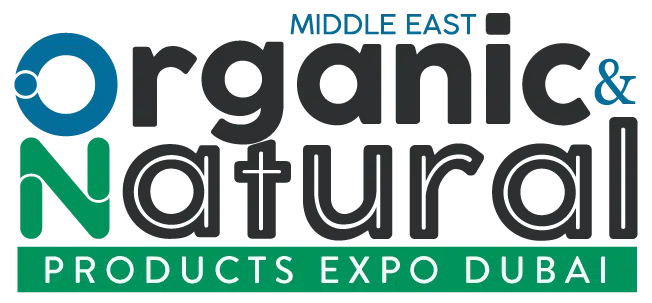Middle East’s per capita spend on cosmetic and personal care products has been recorded to be
one of the highest in the world. What initially started as a trend has now become a way of life. The
Clean beauty industry in the GCC alone will be worth 2.6 billion by 2025. The pandemic has
accelerated the use of environmentally friendly beauty products in the region.
We spoke to experts from the beauty and cosmetics industry to find out more about the surging
demand for clean beauty products in the MENA region.
 “With clean beauty, there has been an overall growth, especially after the onset of the pandemic. Pre-Covid, we as a brand, spent a lot of time and energy trying to create awareness, especially within the MENA region.
“With clean beauty, there has been an overall growth, especially after the onset of the pandemic. Pre-Covid, we as a brand, spent a lot of time and energy trying to create awareness, especially within the MENA region.
Because of COVID-19 and the lockdown that followed it, people have taken the time and effort to educate themselves about sustainability, eco-friendly, understanding ingredients that go into a product, and, how
our products are being formulated. For example, I have very sensitive skin, so certain ingredients don’t work for my skin. If I use coconut oil, a lot of people like me would have an allergic reaction. People always think that organic and natural are better than synthetic and that’s where clean beauty comes into play.
Clean beauty emphasizes and looks at how products are formulated without the excessive usage of ingredients that have high contents of preservatives” started Mukta Tewani Purain, Founder, MissPalettable.com, UAE’s dominant E-commerce platform offering clean and niche beauty brands sourced from all over the globe.
“I think that it is a global trend and it’s not new. Clean beauty has been around for a
new. Clean beauty has been around for a
long time but as Mukta stated, the pandemic has escalated the usage of the term and bought it more to the forefront. This region in particular is an educational platform in terms of clean beauty so much so that when you look at millennials, you’re looking at a woman who was highly
influenced by an influencer. The reality with digitally savvy consumers is that they are well aware of clean beauty and what it means. They know it is not just the product, it is the sustainability factor of the product as well. For a very long time, what was nice to have in a product has now become a must-have, and consumers these days are looking more for what’s not in the product rather than what’s in the product and the performance level of that
product needs to be extraordinarily strong” shared Karen Wells, Brand Director, Mikyajy, an Arabian homegrown makeup brand with over 1.5 million fans in Saudi Arabia, U.A.E, Oman, Bahrain, and Qatar.”
Gijo Jacob, Head of distribution and 
well.”
What has the pandemic translated for clean beauty and cruelty-free cosmetics?
“I think there has been an extraordinary escalation in terms of clean beauty in the rise of the pandemic. The last two years have been difficult for all of us, but I think, although generalizing, the majority of us have been able to focus on our health and well-being and it has been a topic
that is at the forefront of everybody’s mind. Particularly in lockdown, since everybody was wondering how to take better care of their skin and body, for the first time in forever, the demand for makeup plunged while the demand for skincare essentially skyrocketed. Along with that came the concept of clean beauty where manufacturers focused on producing makeup that makes you feel better while improving the way one’s skin looks. Brands started focusing on formulating and promoting their brands as something that has an everlasting value rather than just setting a goal within their innovation,” said Karen.
Mukta added that “covid has caused the demand for clean beauty to hit an all-time high, especially for an eCommerce platform like us. Pre covid, we spent so much more time on our social media trying to educate people about clean beauty but after covid, it escalated to a point where all people talk about, within the industry, is clean beauty. Our current most popular product is long-lasting lipsticks. A lot of consumers are demanding it from us.”
What raw beauty ingredients are in most demand for creating clean beauty products?
Mukta started by saying that “I can’t say that there is a specific raw ingredient that we’re looking for and is trendy. What’s interesting for me is that new and upcoming brands are going back to their roots. For example, you’ve got new South Asian brands that are going back to their roots of Ayurveda. It’s a cultural phenomenon of brands going back to their roots and accepting what their culture is. You’ve got Chinese brands looking for herbal ingredients or you’ve got Japanese brands looking for ingredients that are found there; the common point being that they all use ingredients that are a part of them and their culture. Every brand looks for ingredients that cater to their purpose therefore there isn’t a singular ingredient that you can pinpoint for having most demand.”
“One of the main things that I have heard from our formulating team and cosmetic chemist is that we are very keen to work with nut and seed oils for the simple reason that they repair and replace petroleum and other high-performance ingredients, therefore, making it very effective in terms of the natural arena. We have seen a significant surge in demand for products that contain Vitamin C, Vitamin E, and collagen,” said Karen.
“We are distributors of many brands, but we also have our brand which we manufacture with contract manufacturers. Since we work very closely with the manufacturers, we’ve understood that mostly they’re trying to find alternatives for harsh chemicals and synthetic products. So, what we’ve high demand for is vegetable oils, mostly coconut oil and avocado oil. They are extremely functional and have active properties which is the reason that its always in high demand. Another raw ingredient that we’ve seen on demand is licorice. Especially during Covid, the demand for products that contained licorice was boosted because of its immunity-building properties. Lately,
a lot of brands have been using licorice for its anti-aging benefits” informed Gijo.
What advice would you give suppliers who are looking to distribute their products into the market?
“I think anybody bringing a product into this market needs to be transparent in terms of ingredients, sourcing, and packaging. The more transparent you are about the product, the easier it is for somebody like me, who works with multiple brands, to make an informed decision and see how the product would fit with the mix and have a very credible brand story. My understanding after being in this market for 5 years is that the simpler your message is, the better. I feel that there is no patience in this market, the products’ message has to cross language barriers and easily enable a consumer to understand what the product is and what it does” informed Karen.
What kind of advice would you give someone who wants to advertise or list their products on Miss?
Mukta shared “if you want to bring your product to MENA region, one thing you need to know as a supplier, or a distributor is that every single beauty/skincare product has to be registered with Dubai Municipality. The documentation has to be on track because for us to be able to get you on board, we have to register you. If your brand is transparent and has the documentation and branding on point, it makes our life so much easier. Minimalist skincare is what sells the best because our consumers have very simple and straightforward needs. When brands are very simple with their product descriptions and packaging, we have noticed that they do much better just because a customer can easily go on our website, read about the product, and add it to their cart. Whereas products that are more confusing and elaborate leave customers with 2 choices; either move away from the page or ask questions. Most of the time customers just want simple, clean ingredients that are highly effective.”
Which region do you see most of your skincare, makeup, and cosmetics products coming from?
“Most of our brands come from Europe and the U.S.A. An interesting thing we have noticed is that customers are very invested in knowing more about Korean beauty therefore we have started sourcing skincare products from South Korea as well. South Korean brands are coming out with a hybrid product that is a mix of both skincare and makeup. Their minimalistic makeup is perfect for people who don’t have the time to be putting on a full face. One of our current bestsellers is an SPF 50 CC cream, it is very similar to tinted moisturizers and our customers are loving it because of the convenience and ease of usage,” said Mukta.
To that, Karen added “despite us being an Arab brand, most of our products are sourced from Europe for the simple reason that they’re very transparent about their product development process. They are also very good at following all procedures, emissions, and global regulations.
With that being said, in terms of working with my team, I am looking at other areas of sourcing where I believe they can meet the degrees of transparency that we need along with having credible sustainable stories.”
We can see that eCommerce has driven growth within this particular sector. Mikyajy has been a conventional brick and mortar retail store for quite some time, but you have recently ventured into eCommerce, how is that impacting your business?
Karen shared “eCommerce has had a very positive effect on everybody in fact thank goodness we had it since it was the only way to buy things. Let’s face it, while the world was going through the pandemic, being a platform in the skincare arena really helped. Sometimes, I even think that skincare is becoming a lot like real estate because it is driving such a high click rate and an even higher consumer spend. For me, eCommerce purchasing has so much information power and as a shopper myself, I often look at a product online and read about it before I go and try it out at a physical store. Some brands use their platform as a selling site as well as an information site and I think that’s where you see major success. For Mikyajy, we are relatively new to it as we only started during the pandemic, but we have grown a lot as a business.”
“With clean beauty, eCommerce was the driving force for increasing demand for these products. We have moved back into retail shopping, but eCommerce comes out stronger in terms of convenience and information power. To get customers to choose your brand over others, it’s
important to be a lot more personal with them and to do that you need to have pop-up events or anything that puts your brand out there. For this reason, we can’t only be an online brand, but I do agree with the fact that eCommerce is a driving force as it has successfully given rise to multiple innovative brands” declared Mukta.
The role and importance of consumer awareness and education in the clean beauty sector
Mukta emphasized the role of consumer awareness and education in the sector “A lot of it comes down to digital marketing and content creation. Brands need to educate instead of greenwashing. During the pandemic, a lot of brands were coming forth and bashing other brands for not being regulated clean beauty products. But one thing we have to know is that clean beauty products unlike natural and organic products have no certification that can prove their authenticity. There is no such thing as clean beauty, it is just a jargon word which is why every brand has a different definition for it. Clean beauty doesn’t necessarily need to be natural and organic; it could even contain synthetic ingredients. the concept came around when people started feeling strongly about the transparency of the ingredient list. A lot of brands claim that preservatives are bad, but the reality is that we need preservatives otherwise you would be looking at a product that has a shelf life of 2- or 3 months tops. This is where education is so important. We like working with brands that are realistic and transparent about their mission and objectives.”
Gijo added “It’s very essential to educate and communicate with consumers. The product should either have accurate communication on the packaging or the brand should aim to educate through digital media. Brands should have proper certifications and emblems mentioned on the product for easy understanding of the consumers. Since we don’t have any regional certifications, we are still highly dependent on global certifications that are validated by our local bodies.”
Sustainability is moving higher up the ranks on agendas for most business leaders. How important is it for you as a business or an individual for sustainability to be an element of a product and how can suppliers help in attaining your sustainability goals?
“Sustainability affects all of us, no matter what field or category we operate in. As I operate within the cosmetic industry, I can’t say that every product that we produce can be 100% sustainable. But, as a business, where we can, we consciously try to achieve that in certain products. Our supply base has also been extremely supportive by giving us sustainable options of production to consider. I think that it’s the responsibility of both, a retailer and manufacturer to start looking at sustainable solutions across the board. This region might have come late to the table when compared to other countries but we are embracing this challenge to see where the journey takes us. It won’t happen overnight for sure, but there will be a plan to achieve sustainability in whatever way possible” Karen shared.
If you have 2 products, one of which is sustainable, and the other isn’t. Which one do you see your consumers reach out for?
Karen responded that “in this market, I would say that the consumer will buy the product that delivers what they want it to do because sustainability reduces to be a small factor for them as long as the product does what it says it would do. 75% of my business consists of GenZ consumers based in Saudi and the U.A.E who are extremely aware of their needs and wants. Although sustainability is a plus point, it isn’t the deciding factor for them.”
How important is sustainability as an element for products that you procure and brands that you work with?
“As I mentioned earlier, we give a lot of importance to sustainability. We are amongst the top 100 sustainable companies in the world. Brands definitely cannot be 100% sustainable in terms of product but there are plenty of biodegradable and sustainable alternatives for packaging. Already, there are a lot of brands that have taken it upon themselves to put forth sustainable products and I’m glad to see this gradual but steady shift “remarked Gijo.
What is the exact product labeling certification and product information that is required for working with distributors like yourself?
“There are two ways of registering products; one way is through Dubai municipality while the other is through ESMA. Most brands choose to register their products with Dubai Municipality. When it comes to labeling, there are specific requirements as to what every cosmetic product should have. The minimum labeling requirement for cosmetic products is the clear mentioning of product name, brand name, ingredients list arranged in descending order according to the weight or volume, country of origin, storage conditions, ingredient hypersensitivity, usage instructions, product barcode, net weight or volume, nutritional information if any, and product expiration dates” said Gijo.
What’s next for clean beauty? What trends can we expect to see in the near future?
When asked about the future trends for clean beauty, Gijo replied “lately, I’ve seen many brands demonstrate a particular concern for social and environmental issues, meaning to say that they’re actively trying to be a part of it. Companies are constantly trying to affiliate themselves with brands that are creating a social impact. These are things that have come around recently.”
Mukta added “CSR and sustainability will continue to be a very important factor. There’s been an increase in demand for clean beauty cosmetic brands coming into the Middle East. At the same time, there’s a whole new conversation about slow beauty, that has been popping up quite a lot in the Middle East. A lot of this comes down to people, especially Gen Z’s being a bit more conscious and trying to be a part of the minimalist movement. We’ve got customers who are constantly asking us for minimalistic products. We’re starting to see a rise in demand for makeup now that we’re back to our regular world. Haircare is also a big segment that is going to keep growing. I think that the MENA region is still at the beginning of the clean beauty phase and there is still a lot of growth that’s yet to come.”
